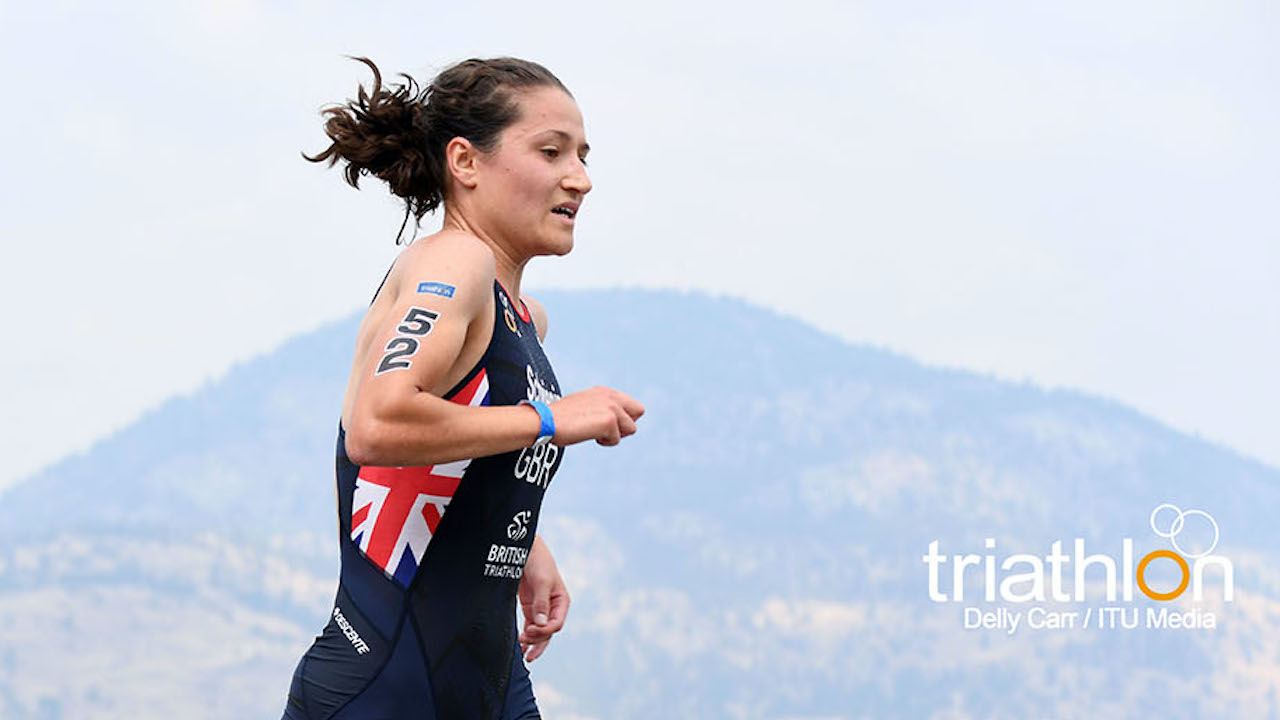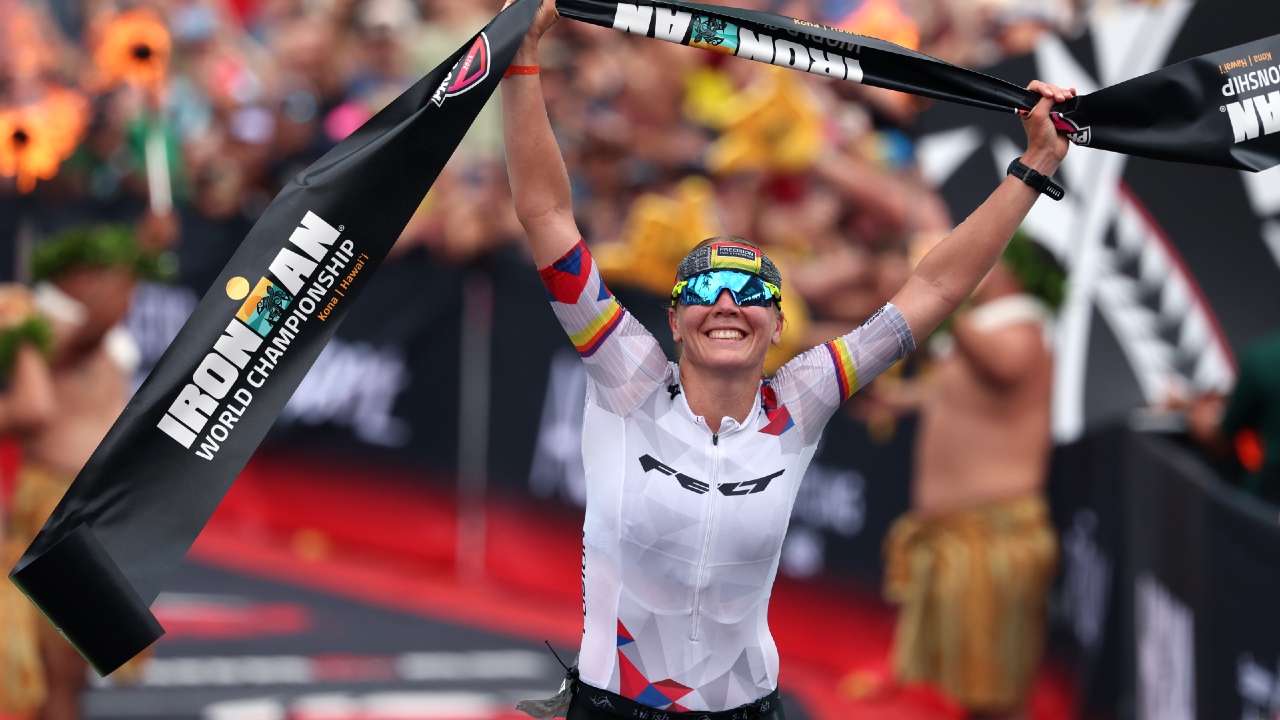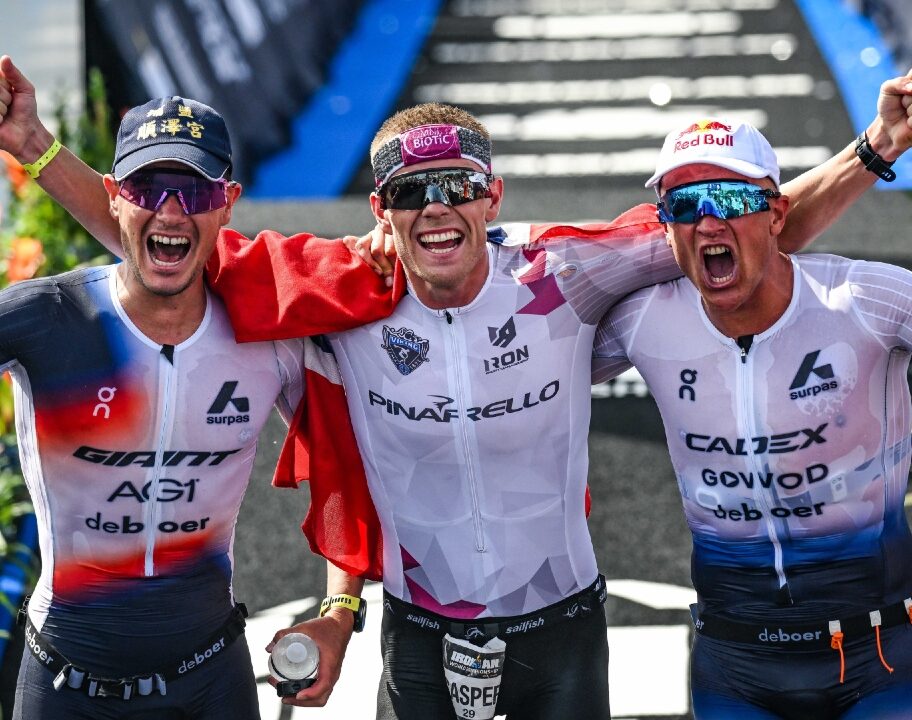Want to dip your toe into the world of multisport but not a fan of swimming? Duathlon is a great alternative to triathlon if you’re not the amphibious type. And while you might think that taking one sport out of the equation makes for an easier ride – duathlon is just as challenging in its own way. Making for a great sense of accomplishment once you’ve finished your first one!
To help you on your way to that finish line feeling, we talk you through how to start training for your first duathlon. From nailing your brick sessions to beat the dreaded ‘jelly legs’ – with a top tip from Jonny Brownlee. To becoming a pacing mastermind to help you race strong from start to finish. We’ll get you from novice to fully-fledged duathlete in no time.
What is a duathlon?
Think of duathlon as triathlon’s dry land cousin. A multisport event in its own right, a duathlon consists of running and cycling in a non-stop format – usually in a run-bike-run order. Athletes start with a running race, before heading into transition to grab their bikes and completing a lap on two wheels. After returning to T2, it’s time to don the running shoes again to tick off a few more miles before crossing the finish line.
Similar to triathlon, there are various duathlon distances on offer. You can learn all about the various duathlon formats in our beginners guide to duathlon. Typically a duathlon features two different lengths of run – for example a 10km first run leg, and a 5km second run leg. However, where a triathlon event is transformed into a duathlon due to a cancelled swim – this format is usually turned on its head. Starting with a shorter run to replace the swim, before athletes head out on the bike.
How to start training for a duathlon – nail the basics first
Once you start talking about transitions, various distances, all sorts of gear and other race day logistics. Duathlon might start to sound all a bit complicated. But at it’s core it’s just running and cycling. Duathlon is far more accessible and beginner-friendly than you might think.

To start preparing for your first duathlon, initially you just want to focus on building up your endurance and confidence for the bike and the run. Even at the shorter distances, duathlon is an endurance sport. So to start laying down the foundations of your duathlon training, focus on ticking off some fun, enjoyable steady state bike rides and runs.
Once you’ve built up some base fitness and you’re comfortable with the two duathlon disciplines individually, you can start getting a little more specific with your training to get race-ready.
How fit do I need to be to do a duathlon?
There are a range of different duathlon distances to choose from, and many race organisers will offer dedicated beginner-friendly options. Meaning you don’t need to be operating at an elite level to take part! A super sprint duathlon typically consists of a 2.5km run, a 10km cycle and another 2.5km run. That’s the equivalent of completing a parkrun – with a little break to cycle for 30 minutes or so in between. Most duathlons aimed at beginners will have lenient time limits, meaning you can take things at your own pace – there’s no harm in walking for some of the run section if you need to. Generally speaking, as long as you’re fit enough to complete around 1hr of steady, aerobic exercise – you’ll be capable of completing your first duathlon.
What are brick sessions? How to get used to running after cycling
A brick session is a multisport term referring to completing two different sports back to back – usually cycling and running. The aim is to get your body used to the sensation of switching between the sports, so that you can do so more efficiently come race day.
Once you get closer to your duathlon event, start adding in one brick session per week to your training schedule by going for a short run straight after a bike ride (known as ‘running off the bike’.) Start small, and just run for a few minutes to get used to the sensation. The first time you run off the bike, you’ll probably notice it feels like your legs are suddenly made out of jelly. That’s totally normal – so don’t panic! After a few brick sessions, your body will adapt and you’ll find it starts to feel easier.
If logistics are tricky, you can always use an exercise bike and a treadmill in your local gym. The key thing here is to get used to the sensation of switching between the two sports.
Jonny Brownlee’s top tip for running off the bike – practice, relax and up the cadence
Olympic triathlon legend Jonny Brownlee is well-versed in putting his best foot forward when it comes to running off the bike. And while he’s known for his swim-bike-run successes, when the European Triathlon Championship in Madrid in 2023 was turned into a duathlon – Brownlee showed his skills over the run-bike-run format to take second place.

Earlier in the season, we asked Jonny for his top tip for running off the bike:
“My big tip is simple. Practice it! Learn to get used to the feeling. Everyone’s legs feel a bit unusual for a short while off the bike, so you need to accept this is normal.”
“I tell myself to relax and keep I high cadence and avoid overstriding. I also tell myself I will feel better after 1 km. However bad I feel, I know I will come round after the first km. Until that point relax the arms, look forward and keep a fast cadence.”
Practice your transitions
On race day, you’ll complete a run-to-bike transition (T1) and a bike-to-run transition (T2). It’s a good idea to practice your transitions during training in the weeks leading up to your event, to help alleviate the race day nerves and reduce the chance of getting flustered when the adrenaline is pumping mid-race.
You can learn more about transitions, including all the rules to be aware of and the best way to set up your transition zone in our guide to transitions. For your first duathlon, you’ll need to decide if you’re going to wear cycling shoes, or complete the full race in your running shoes. The latter is fine – plenty of people opt to use flat pedals! But if it’s the former, practice changing your shoes at pace and consider getting some elastic laces for your running shoes to avoid fumbling with pesky shoe lace knots.

The other key rule to know about is that you mustn’t touch your bike until you’ve put your helmet on – even if your just pushing the bike through transition and you haven’t started riding yet.
In a race situation, it’s easy to make silly mistakes – from ‘losing’ your bike, to accidentally trying to head off on the run with your cycling helmet still on your head. Practicing your transitions in training will help to ingrain it into your muscle memory, so it’s almost second nature by the time you get to race day.
Get good at pacing
The key to success – and enjoyment – in a duathlon is pacing. Starting with a run makes it easy to get wrapped up in the race day excitement, let your adrenaline take control and set off way too fast at the start of the race. Trust us when we say you’ll regret it later on in your event!
Instead, you want to hold back a little at the start so that you can build the pace as the race goes on and finish strong rather than fading. A good way to practice this is by completing ‘negative split’ run sessions during training.
For example let’s say you’re going to run for 35 minutes. Start with 10 minutes at an easy, relaxed pace. Then step it up a gear and complete 10 minutes at a steady pace – working a little harder, but not going full gas. Finally complete the last 10 minutes at around your 5km race pace, before dropping the pace back down for an easy 5 minute cool down jog. This will help you to get used to keeping the pace controlled at the start, and then working through your ‘gears’ to build up to a faster pace – without peaking too soon and blowing up.
Duathlon gear
For your first duathlon event, anything goes on the gear front. As long as you’ve got a road-worthy bike (mountain bikes are fine!), a well-fitting cycling helmet, comfortable sportswear and footwear that you can cycle and run in. You’ll be able to take on your first duathlon event. But if you want to step things up a notch and get some specific duathlon gear, we’d recommend investing in a tri suit and a race belt, too.
Getting ready for your first duathlon can be nerve-wracking and exciting in equal measures, but totally worth it once you experience the high that comes with crossing your first finish line! Head over to our beginners section for more training tips, explainers and gear guides to help you on your multisport journey.











